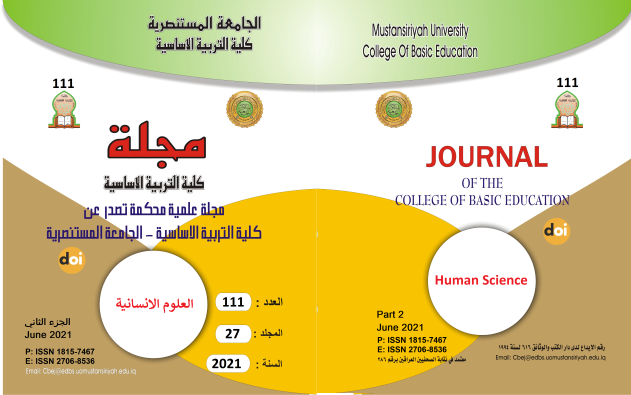he effect of the yes, no, creative strategy, the achievement of geography among students Fifth grade literary
Main Article Content
Abstract
The current research aims to know the effect of a yes, no, creative strategy in achieving geography for fifth literary students, and the research community represented fifth literary students in preparatory and secondary day schools for boys in the city of Baghdad, the researcher chose a short prep for boys to be the sample of the research, where he chose Division (A) to represent the control group and study in the traditional way, and Division (B) to represent the experimental group and study with a yes, no, creative strategy. As for the research tool (achievement test) that was applied at the end of the experiment, the researcher prepared it and confirmed its psychometric properties, and the researcher rewarded between The two groups count Of variables (chronological age in months, geographical knowledge, the former achievement, IQ test Ravn), has adopted the researcher used for two independent samples, and the Alpha Cronbach statistical and liquid, where the results showed:
Students of the experimental group who are studying according to the strategy of yes, no, creative, outperform the students of the control group who are studying according to the traditional method in the achievement test, and in light of the results the researcher recommends the teachers of geography subject to employ modern strategies in teaching geography, especially the strategy of yes, no, creative.
Article Details

This work is licensed under a Creative Commons Attribution-ShareAlike 4.0 International License.
